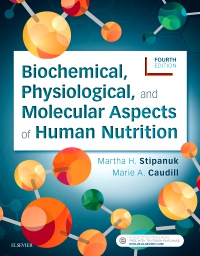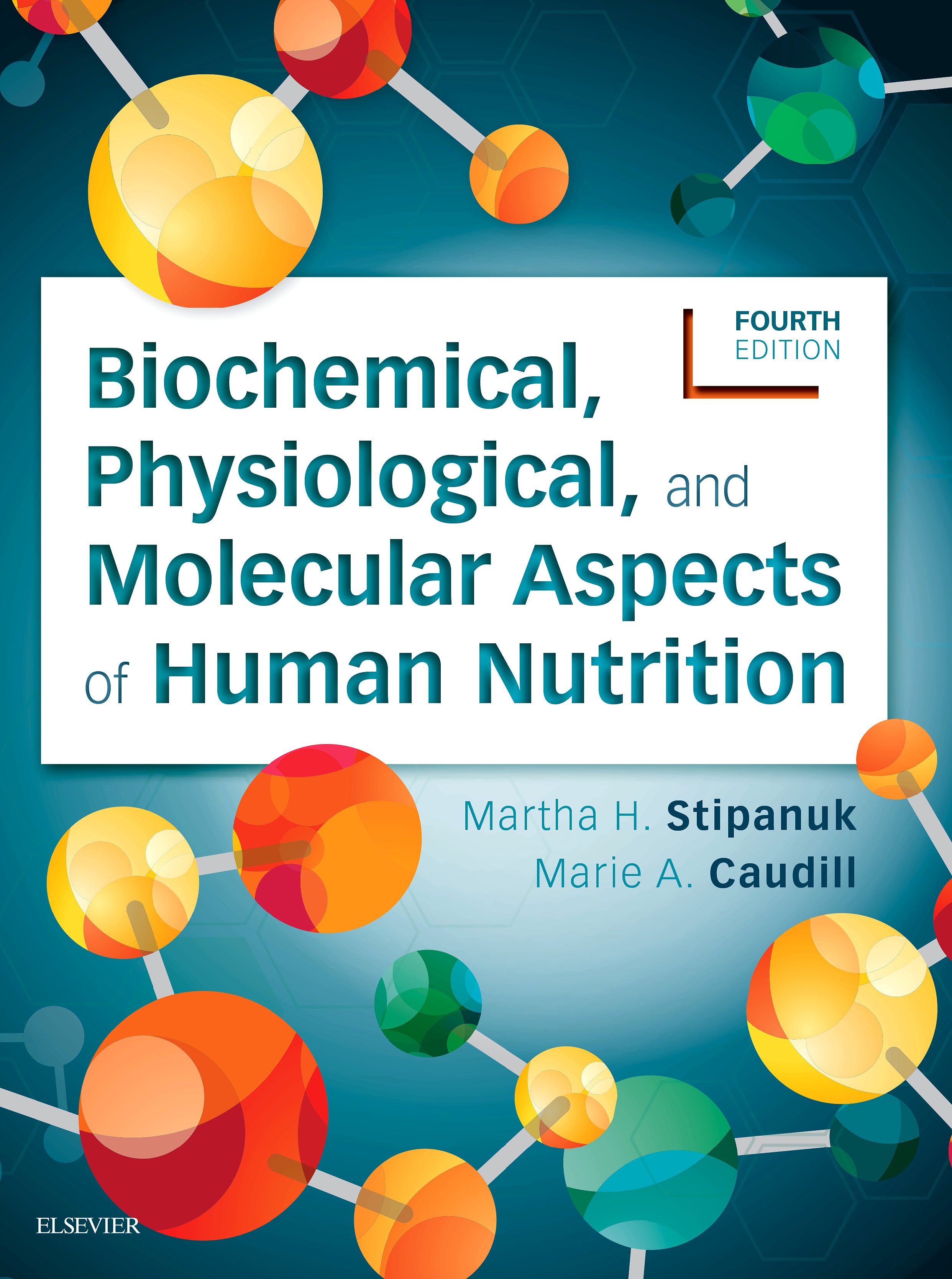
Biochemical, Physiological, and Molecular Aspects of Human Nutrition - Elsevier eBook on VitalSource, 4th Edition
Elsevier eBook on VitalSource

A scientific look at the biological bases of human nutrition. Covering advanced nutrition with a comprehensive, easy-to-understand approach, Biochemical, Physiological, and Molecular Aspects of Human Nutrition, 4th Edition, focuses on nutrition at the molecular, cellular, tissue, and whole-body levels. Written by Martha Stipanuk, Marie Caudill, and a team of nutrition experts, the text addresses nutrients by classification, and describes macronutrient function from digestion to metabolism. This edition includes the most current recommendations from the Dietary Guidelines for Americans, plus coverage of the historical evolution of nutrition and information on a wide range of vitamins, minerals, and other food components.
Newer Edition Available
Biochemical, Physiological, and Molecular Aspects of Human Nutrition - Elsevier E-Book on VitalSource
-
- NEW! Thoroughly updated art program helps to clarify complex concepts for the reader.
- NEW! Select bolded summary headings enable students to efficiently review information and recognize major messages.
- NEW! Content updated throughout incorporates the latest research and findings, including extensively revised coverage of lipids, lipoproteins, cholesterol, fatty acids, and triacylglycerol metabolism.
- NEW! Improved writing style makes the material more concise, direct, and accessible.
- NEW! Additional boxes, tables, and critical thinking questions break up the narrative and reinforce key concepts.
- More than 20 expert contributors provide the latest information on all areas of the nutrition sciences.
- Thinking Critically sections within boxes and at the end of chapters help in applying scientific knowledge to "real-life" situations.
- Common Abbreviations for the entire book are listed alphabetically on the inside back cover for easy reference.
- Nutrition Insight boxes discuss hot topics and take a closer look at basic science and everyday nutrition.
- Clinical Correlation boxes show the connection between nutrition-related problems and their effects on normal metabolism.
- Food Sources boxes summarize and simplify data from the USDA National Nutrient Database on the amount and types of foods needed to reach the recommended daily allowances for vitamins and minerals.
- DRIs Across the Life Cycle boxes highlight the latest data from the Institute of Medicine on dietary reference intakes for vitamins and minerals, including coverage of infants, children, adult males and females, and pregnant and lactating women.
- Historical Tidbit boxes provide a historical context to key nutritional findings.
-
- NEW! Thoroughly updated art program helps to clarify complex concepts.
- NEW! Select bolded summary headings enable students to efficiently review information and recognize major messages
- NEW! Content updated throughout incorporates the latest research and findings, including extensively revised coverage of lipids, lipoproteins, cholesterol, fatty acids, and triacylglycerol metabolism.
- NEW! Improved writing style makes the material more concise, direct, and accessible.
- NEW! Additional boxes, tables, and critical thinking questions break up the narrative and reinforce key concepts.
-
Unit I: Nutrients
1. Nutrients: History and Definitions
2. Guidelines for Food and Nutrient IntakeUnit II: Structure and Properties of the Macronutrients
3. Structure, Nomenclature, and Properties of Carbohydrates
4. Structure, Nomenclature, and Properties of Lipids
5. Structure, Nomenclature, and Properties of Proteins and Amino AcidsUnit III: Digestion and Absorption of the Macronutrients
6. Overview of Digestion and Absorption
7. Digestion and Absorption of Carbohydrates
8. Digestion and Absorption of Lipids
9. Digestion and Absorption of ProteinUnit IV: Metabolism of the Macronutrients
10. Central Aspects of Macronutrient Metabolism
11. Overview of the Regulation of Macronutrient Metabolism
12. Metabolism of Carbohydrate
13 Metabolism of Fatty Acids, Acylglycerols, and Sphingolipids
14. Cholesterol and Lipoproteins: Synthesis, Transport, and Metabolism
15. Protein and Amino Acid Metabolism
16. Metabolism of Individual Amino Acids
Unit V: Macronutrient Requirements
17. Total Energy Requirement: Energy Expenditure, Growth, and Energy Stores
18. Requirements or Recommended Intakes for Carbohydrate and Lipid
19. Protein and Amino Acid Requirements
20. Consequences of Energy Imbalance: Obesity and UndernutritionUnit VI. The Vitamins
21. Niacin, Riboflavin and Thiamin
22. Folate, Choline, Vitamin B12 and Vitamin B6
23. Biotin and Pantothenic Acid
24. Vitamin C
25. Vitamin K
26. Vitamin E
27. Vitamin A
28. Vitamin DUnit VII: The Minerals
29. Calcium and Phosphorus
30. Magnesium
31. Sodium, Chloride, and Potassium
32. Body Fluids and Water Balance
33. Iron
34. Zinc, Copper, and Manganese
35. Iodine
36. Selenium
37. Fluoride
38. Molybdenum and the Beneficial Bioactive Trace Elements



 as described in our
as described in our 